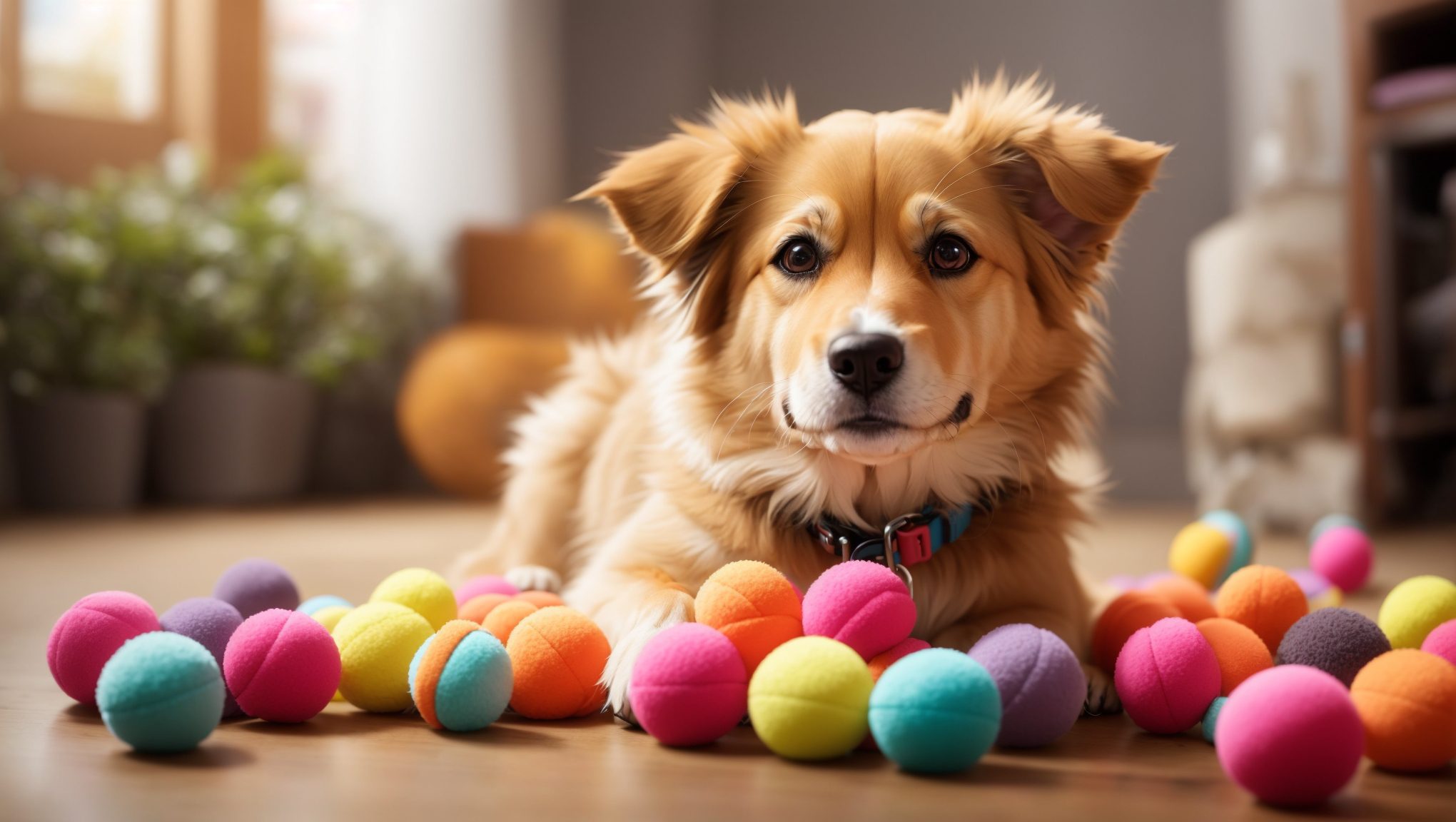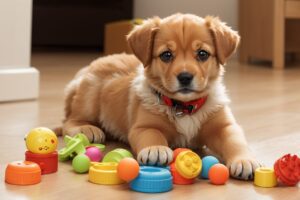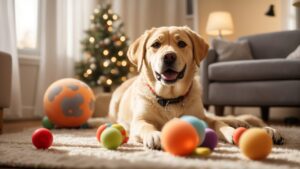Choosing the right dog toy is crucial for keeping your furry friend happy and healthy. In this comprehensive guide, we’ll delve into the ins and outs of finding that perfect toy for your canine companion. From understanding your dog’s unique needs to budget-friendly options and toy maintenance, we’ve got you covered. So, let’s embark on this journey to ensure your pup’s tail never stops wagging!
Table of Contents
I. Understanding Your Dog’s Needs
Before you start shopping for dog toys, it’s essential to understand your dog’s unique needs and preferences. Every dog is different, so consider these factors to make an informed choice.
1. Size and Breed Considerations
Dogs come in various sizes and breeds, each with its own set of characteristics and play styles. Larger breeds might prefer sturdy toys for aggressive chewing, while smaller dogs might enjoy plush toys for cuddling. Consider your dog’s size and breed when choosing a toy that suits them best.
2. Age and Activity Level
Just like us, dogs’ activity levels change as they age. Puppies are full of energy and curiosity, while senior dogs may have a more relaxed play style. Make sure the toy you choose matches your dog’s age and energy level to keep them engaged and happy.
II. Types of Dog Toys
Now that you have a better understanding of your dog’s needs, let’s explore the different types of dog toys available and how they can cater to your pup’s preferences.
1. Chew Toys
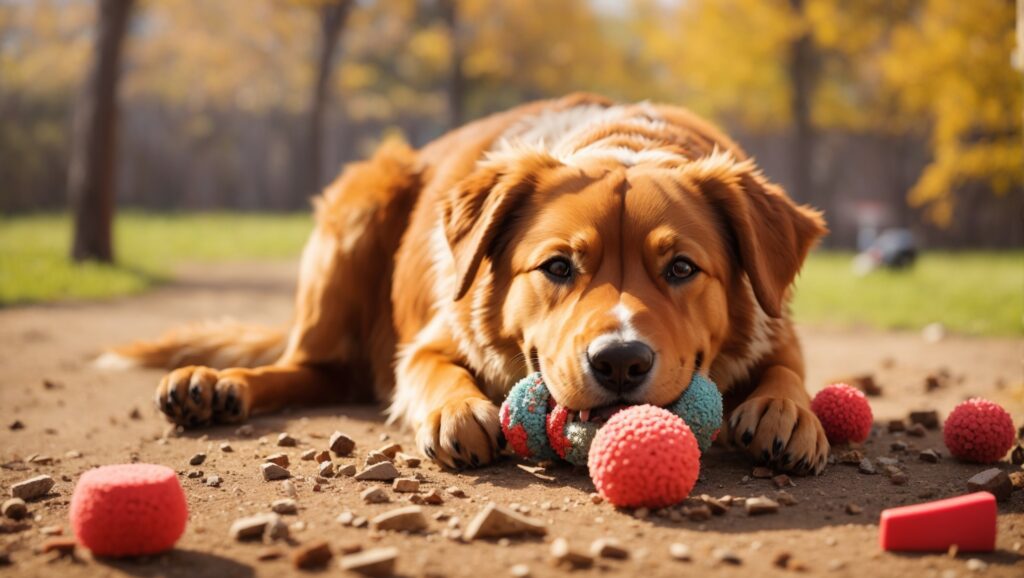

Chew toys are a staple in the world of dog toys. They’re not only excellent for your dog’s dental health but also provide a much-needed outlet for their innate desire to chew. These toys come in various shapes, sizes, and materials, allowing you to find the perfect fit for your pup.
Rubber chew toys, such as the classic Kong, are renowned for their durability. They can withstand even the most enthusiastic chewers and often have hollow centers where you can hide treats, turning playtime into a rewarding experience.
For puppies, teething rings and softer rubber toys are ideal, as they soothe their sore gums and encourage healthy chewing habits. Always choose chew toys made from non-toxic materials to ensure your dog’s safety.
2. Interactive Toys
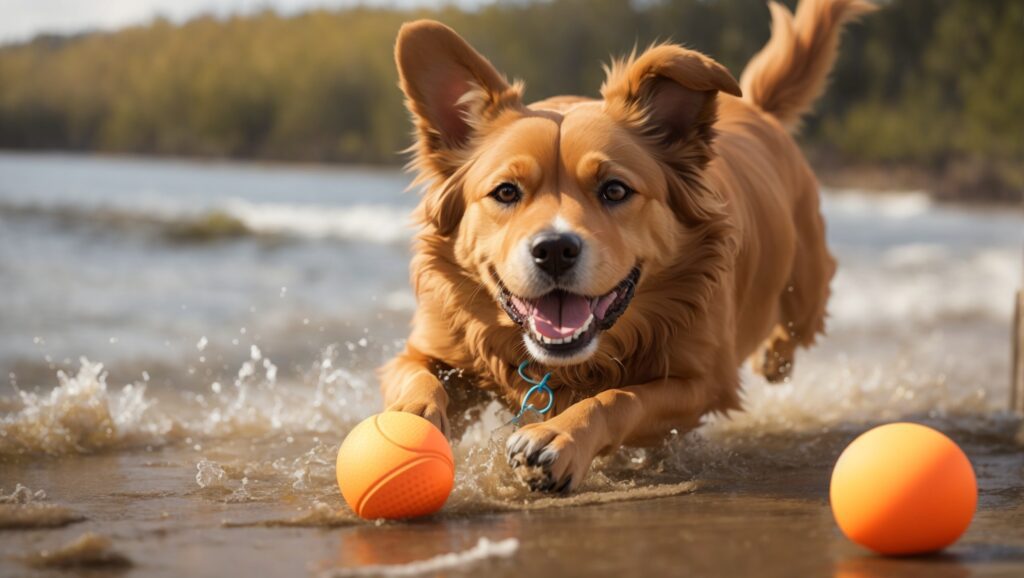

Interactive toys are the mental gym equipment for your dog. They’re designed to challenge your pup’s intellect and problem-solving skills, providing mental stimulation in addition to physical exercise. These toys are fantastic for preventing boredom, especially when you’re not around to play.
Treat-dispensing toys, like the Busy Buddy Twist ‘n Treat, require your dog to figure out how to release the hidden treats by rolling, shaking, or manipulating the toy. These toys keep your dog engaged and mentally sharp.
Puzzle toys, such as the Outward Hound Hide-A-Squirrel Puzzle Toy, mimic the thrill of the hunt by hiding squeaky toys or treats inside plush puzzle pieces. Your dog will love the challenge of unearthing the hidden treasures.
Interactive toys are perfect for dogs of all ages but can be especially beneficial for breeds known for their intelligence, like Border Collies and German Shepherds.
3. Fetch Toys


For dogs with boundless energy and a love for chasing, fetch toys are a must-have. These toys are designed for high-speed games of fetch, which not only provide physical exercise but also strengthen the bond between you and your furry friend.
Tennis balls are classic fetch toys, but there’s a plethora of options to choose from. Some fetch toys have unique shapes that bounce unpredictably, adding an element of surprise to the game. Others are designed to float, making them perfect for water play on hot summer days.
When selecting a fetch toy, consider your dog’s size and the environment in which you’ll be playing. Smaller dogs might prefer smaller, lightweight balls, while larger dogs may need more substantial options to prevent choking hazards.
4. Puzzle Toys
Puzzle toys are like brain teasers for dogs, and they come in various forms to challenge your pup’s cognitive abilities. These toys are excellent for keeping your dog mentally stimulated and preventing boredom.
Maze-style puzzle feeders, like the Nina Ottosson Dog Brick Interactive Puzzle Toy, require your dog to slide, flip, or lift pieces to reveal hidden treats. This engages their problem-solving skills and rewards them for their effort.
For dogs that enjoy a good challenge, consider puzzle toys with multiple difficulty levels. This way, you can adjust the toy’s complexity to match your dog’s skills, providing an ongoing mental workout.
5. Plush Toys


Plush toys are the cuddly companions of the dog toy world. They’re perfect for dogs that enjoy snuggling and carrying their toys around. However, it’s essential to choose plush toys wisely, as they may not withstand aggressive chewing.
When selecting plush toys, look for ones with reinforced seams and strong stitching. Toys designed for moderate chewers often have multiple layers of fabric to increase durability.
Plush toys often come in various animal shapes, from squeaky squirrels to stuffed ducks. Your dog might even develop a favorite “plushie” to cuddle with during nap time.
6. Tug Toys
Tug toys are designed for interactive play between you and your dog. They can be used for a friendly game of tug-of-war, which not only provides physical exercise but also strengthens the bond between you and your furry friend.
These toys are typically made from strong materials like rope or rubber, ensuring they can withstand the pulling and tugging during play. Tug toys come in various shapes and sizes, making it easy to find one that suits your dog’s preferences.
Remember, when playing tug-of-war, it’s essential to establish clear rules and boundaries to ensure safe and enjoyable play. Always let your dog “win” occasionally to keep the game exciting and rewarding.
III. Safety First: Choosing Non-Toxic Materials
Ensuring the safety of your dog should be your top priority when selecting a dog toy. Let’s dive into the safety aspects and materials to look for.
1. Hazardous Materials to Avoid
Beware of toys that contain harmful materials like lead, phthalates, and BPA. These chemicals can be harmful to your dog if ingested.
2. BPA-Free and Phthalate-Free Toys
To ensure your dog’s safety, opt for toys that are labeled as BPA-free and phthalate-free. These toys are less likely to contain harmful chemicals.
3. Durability
Choose toys made from durable materials, especially if your dog is an aggressive chewer. Look for reinforced seams and strong stitching to prevent the toy from falling apart.
IV. Age-Appropriate Toys
Different life stages require different types of toys to keep your dog engaged and satisfied. Let’s explore the toys suitable for puppies, adult dogs, and senior dogs.
1. Puppy Toys
Puppies are full of energy and curiosity, so opt for toys that can withstand their sharp teeth and constant playfulness. Chew toys, soft plush toys, and interactive toys are great choices for puppies.
2. Adult Dog Toys
Adult dogs have settled into their routines, so choose toys that align with their activity level and preferences. Consider fetch toys, interactive puzzles, or toys that cater to their specific interests.
3. Senior Dog Toys
Senior dogs may have sensitive teeth and joints, so opt for softer toys that are gentle on their aging bodies. Look for toys designed for gentle play and comfort.
V. Understanding Play Styles
To choose the perfect dog toy, you need to consider your dog’s play style and preferences. Are they active and playful, or do they prefer solo play? Let’s explore the different play styles and the toys that match them.
1. Active Play
If your dog is active and loves to run, jump, and chase, consider toys that encourage physical activity, such as fetch toys or flying discs. These toys keep your dog engaged and provide an excellent workout.
2. Solo Play
Some dogs enjoy playing by themselves when their humans are busy. Puzzle toys and treat-dispensing toys are great options for solo play, as they keep your dog mentally stimulated even when you’re not around.
3. Interactive Play
For dogs that love interacting with their humans, choose toys that allow you to engage with them. Tug toys, interactive puzzles, and fetch toys are perfect for bonding through play.
VI. Budget Considerations
You don’t have to break the bank to find the perfect dog toy; budget-friendly options are available. Let’s explore how you can make informed choices without overspending.
1. High-Quality vs. Budget-Friendly Toys
High-quality toys can be an investment, but they often last longer and are safer for your dog. However, budget-friendly options can also provide fun and entertainment. Strike a balance between quality and affordability to meet your dog’s needs.
2. DIY Dog Toys
Get creative and make your own dog toys from household items. DIY toys can be both budget-friendly and fun to craft. Plus, they can be tailored to your dog’s preferences.
VII. Reading Reviews and Recommendations
Take advantage of the experiences of other dog owners by reading reviews and seeking recommendations.
1. Online Reviews
Check online reviews and ratings for specific dog toys. These reviews often provide insights into the toy’s durability, safety, and how much dogs enjoy playing with it.
2. Consultation with Veterinarians and Trainers
Your veterinarian or a professional dog trainer can offer valuable recommendations based on your dog’s individual needs and behavior. Don’t hesitate to seek their expert advice.
3. Advice from Fellow Dog Owners
Connect with other dog owners in your community or online forums to gather firsthand experiences and recommendations on dog toys that have worked well for their pets.
VIII. Testing the Toy with Your Dog
Once you’ve selected a potential toy, it’s essential to test it out with your dog to ensure it’s a good fit.
1. Monitoring Your Dog’s Reaction
Introduce the new toy to your dog and observe their reaction. Do they seem excited and engaged, or do they lose interest quickly? Your dog’s response will help you determine if the toy is a hit.
2. Safety Checks
Regularly inspect your dog’s toys for signs of wear and tear. Remove any broken or damaged toys to prevent choking hazards or ingestion of small parts.
IX. Proper Toy Maintenance
To extend the life of your dog’s toys and ensure their ongoing safety, proper maintenance is crucial.
1. Cleaning and Sanitizing
Clean your dog’s toys regularly to prevent the buildup of dirt and bacteria. Use pet-safe cleaning products and follow the manufacturer’s cleaning instructions.
2. Regular Inspection
Periodically inspect your dog’s toys for wear, loose parts, or damage. Replace any damaged toys promptly to keep your dog safe during playtime.
Choosing the Perfect Dog Toy: A Tail-Wagging Conclusion
Choosing the perfect dog toy may take some time and consideration, but it’s well worth the effort to keep your furry friend happy and healthy. By understanding your dog’s needs, selecting the right type of toy, prioritizing safety, and considering play styles, you can ensure your dog enjoys hours of entertainment and companionship.
Frequently Asked Questions (FAQs)
Q1: Can I leave my dog with chew toys when I’m not at home? A: While chew toys can be a great way to keep your dog occupied, it’s essential to ensure they are safe and monitor your dog initially. Some dogs may chew through toys quickly, so always supervise their playtime, especially with new toys.
Q2: Are squeaky toys safe for dogs? A: Squeaky toys can be safe if they are made from non-toxic materials and are appropriately sized for your dog. However, some dogs may become obsessed with the squeaking noise, so it’s essential to monitor their play to prevent overexcitement.
Q3: How often should I rotate my dog’s toys? A: It’s a good idea to rotate your dog’s toys every few weeks to keep their playtime exciting and prevent boredom. However, always ensure that the toys you provide are safe and in good condition.
Q4: Are there specific toys for aggressive chewers? A: Yes, there are toys designed specifically for aggressive chewers. Look for toys made from durable materials like rubber or nylon, which can withstand strong chewing.
Q5: Can I make DIY dog toys from household items? A: Absolutely! Many household items can be repurposed into safe and entertaining dog toys. Just be sure to avoid using anything that could be harmful if ingested or choked on, and supervise your dog’s play with DIY toys.
Remember, choosing the perfect dog toy is all about catering to your dog’s individual preferences and needs. Whether it’s a squeaky ball, a treat-dispensing puzzle, or a plush friend, the right toy can provide endless joy and companionship for your furry family member.

